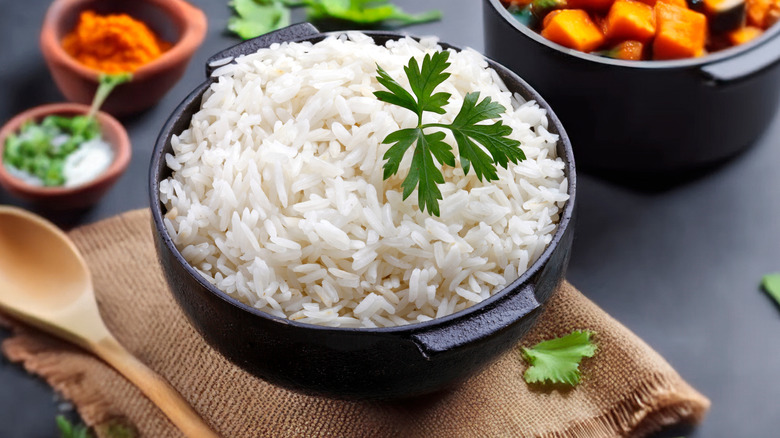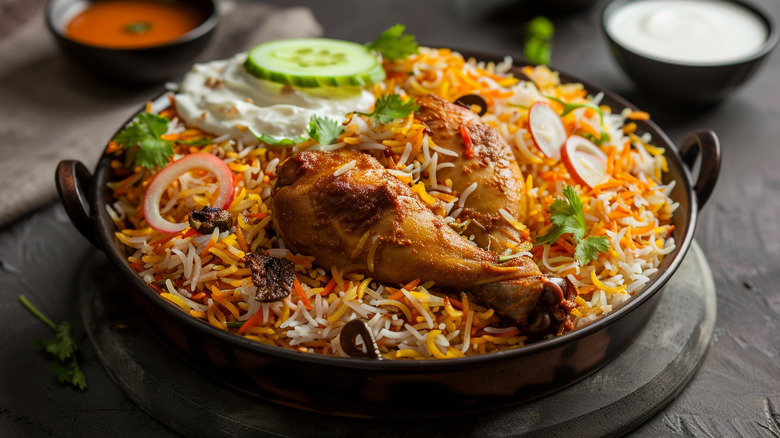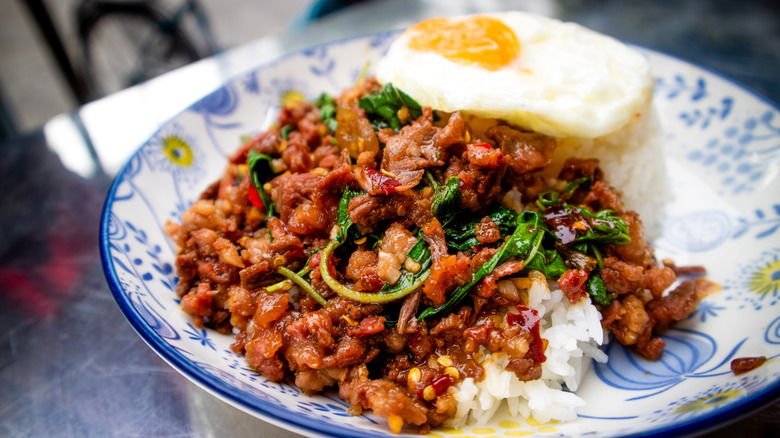Basmati Vs Jasmine Rice: What's The Actual Difference?
As one of the foods Ina Garten always keeps in her kitchen, the sheer versatility of rice should come as no surprise. While rice takes center stage in countless dishes and cuisines across the world, it is far from a monolith. That said, for simplicity's sake, this grain can be divided into two very broad main categories: long grain and short grain rice. Many varieties of rice fall within these two categories and, among the long grain varieties, basmati and jasmine rice are some of the most common ones in South Asian and Middle Eastern cuisine.
The grains of basmati and jasmine rice both separate and lighten up as they cook, but the more complicated world of aromas, flavors, and textures are what truly distinguish them from one another. While the choice between jasmine and basmati rice is ultimately up to individual preference, sticking with the variety called for in a recipe is a safe bet. In other words, swapping basmati rice for jasmine or vice versa may have unintended consequences, especially in the texture department.
The tea about basmati rice
While basmati varieties can be found growing across the world, this grain was originally grown in the Indian subcontinent, especially regions of what are now India and Pakistan. Basmati rice is known for its firm and chewy texture when cooked. When basmati rice is cooking, you won't get a floral scent like jasmine rice produce, but instead will detect a nutty aroma slightly resembling popcorn (and which will still leave your tastebuds fiending for a bite). These undertones of basmati rice come out to play in dishes centering fruity flavors or poultry protein.
Basmati rice is a popular base in South Asian and Middle Eastern cuisine. One of the strengths of this rice is its ability to absorb flavor, which readily makes basmati rice a blank canvas for whatever your dish needs. For instance, when preparing biryani, a Pakistani and Indian dish you should try at least once, basmati rice is typically cooked with cardamom, bay leaves, star anise, and many other aromatics that sink into the grain. As a bonus, the fluffiness of basmati rice helps to ensure a soft, but not sticky, texture.
Jasmine rice plays nice
Originally grown in Thailand, jasmine rice contains more of carbohydrates, which contribute to its soft, sticky texture. While jasmine rice cooks, your kitchen is bound to fill with a light, floral scent, while its sweet, buttery flavor makes it the perfect vessel for aromatics used in pilaf dishes. Jasmine rice can be crisped during cooking or simmered with a protein and other aromatics to produce a flavorful soup.
Over time, jasmine rice has become a cornerstone of Thai cuisine wherein it ties together a diverse array of savory and sweet dishes such as Thai holy basil chicken and Panang chicken curry. The sweet aroma and perfectly sticky texture of jasmine rice are what make this rice so beloved across the world. And regardless of which variety of rice you want to try for dinner, knowing how to safely store and reheat cooked rice is vital to ensure none of it goes to waste.


